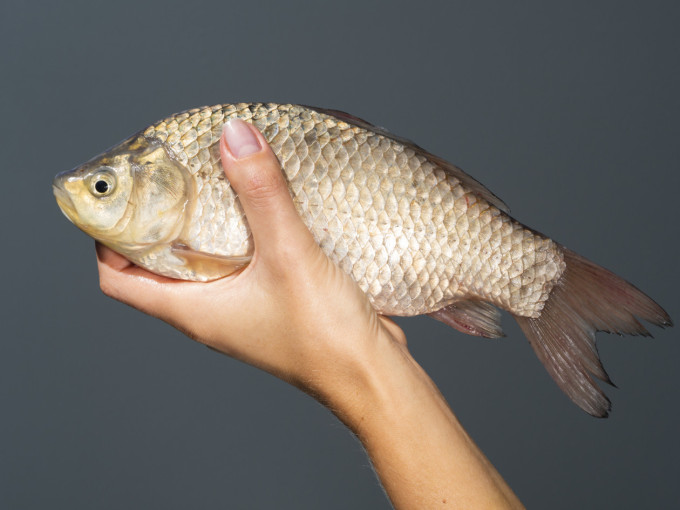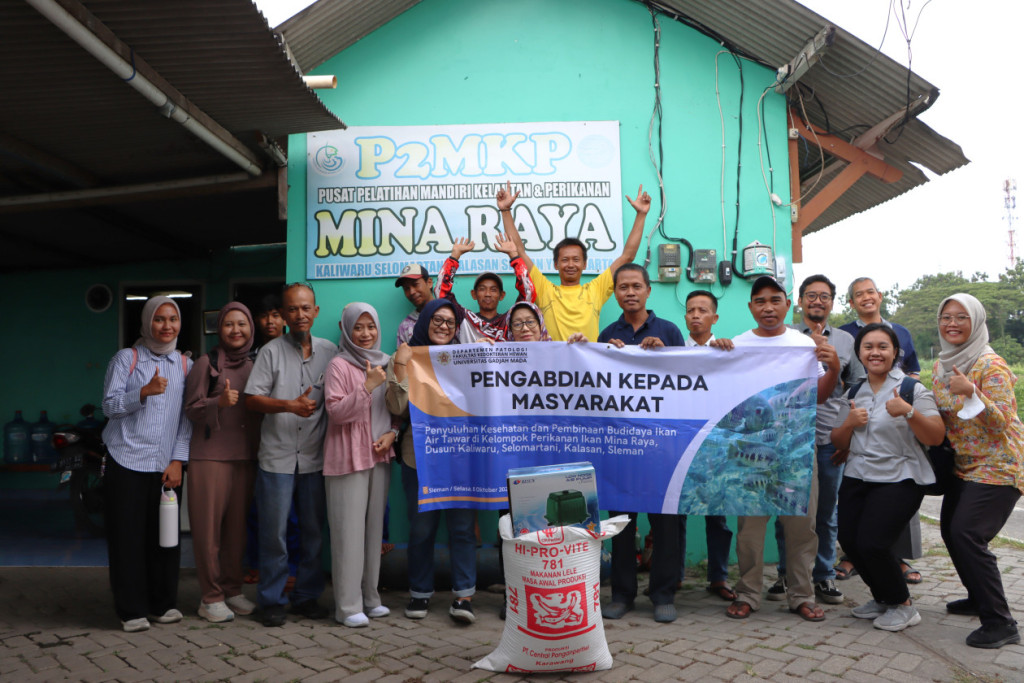
The dry season in Indonesia affects the agriculture and plantation sectors as well as fisheries. Rising temperatures have led to various issues, from the emergence of diseases to the death of seedlings, preventing fish from growing optimally.
This situation has garnered the full attention of the Faculty of Veterinary Medicine (FKH UGM).
A community service team from FKH UGM, consisting of lecturers, educators, and interns from the Department of Pathology, conducted an outreach activity aimed at improving the effectiveness and productivity of fish farming at the Independent Training Center for Marine and Fisheries (P2MKP) Mina Raya in Kaliwaru, Kalasan District, Sleman Regency, on Tuesday, Oct. 8, 2024.
This team included veterinarians Sugiyono, Mia Nur Farida (the head of the outreach team), and Afif Muhammad Akrom. The head of the Department of Pathology, Dr. Sitarani Widyarini, also attended the event.
Upon arrival, the FKH outreach team was warmly welcomed by P2MKP manager Anjar Purnomo, who invited them to monitor the condition of the tilapia and carp seedlings.

As the head of the outreach team, Farida expressed her concern regarding the health of the fish.
Farida and her team discussed the condition of the cultivated fish seedlings with the managers and staff of P2MKP Mina Raya.
According to Purnomo, there have been continuous cases of fish seedling deaths over the past four weeks. This occurred when the fish larvae were transferred to a reservoir.
“The numbers are not large, but the deaths keep happening, reducing the fish survival rate to only 40%,” Purnomo stated.
Additionally, Purnomo reported that many fish died in the ponds within nine days. He has not yet found a solution to this problem.
Numerous symptoms of fish illness have been observed, including swollen eyes, inactivity, and unresponsiveness to human movements, which ultimately lead to fish death.
“In the past, the fish survival rate could reach 80-90%, but currently, it is difficult to achieve that figure. The survival rate is only around 30-40%,” he explained.
In response to these concerns, Sugiyono offered several solutions, such as checking the water source and improving fish nutrition.
If the mortality rate is high, the management needs to evaluate the water quality, temperature, oxygen levels, ammonia content, and other factors.
Sugiyono recommended installing a thermometer in the ponds so managers could always monitor the water temperature.
Furthermore, he suggested using shade nets to help maintain water temperature.
“Thermometers are suitable for installation in ponds like these,” he added.
Author: Tiefany
Editor: Gusti Grehenson
Post-editor: Lintang
Photo: Freepik

